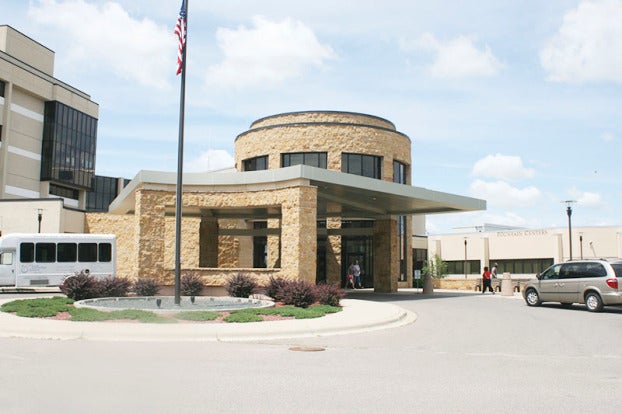Daily COVID-19 update: Minnesota crosses grim Christmas Eve threshold of 5K deaths
Published 2:24 pm Thursday, December 24, 2020
|
Getting your Trinity Audio player ready...
|
It’s a day every COVID-19 watcher hoped would never arrive.
Almost nine months to the day Minnesota reported its first COVID-19 death, the state has marked an awful milestone — more than 5,000 total deaths — on Christmas Eve.
November and December were dreadful months, with some 2,500 deaths reported. That’s more than half of all the deaths in the pandemic in fewer than two months.
At the same time, there’s reason for guarded optimism. Other key COVID-19 metrics continue to offer definite signs of hope. New daily caseloads are retreating from their late November, early December peaks.
Here are Minnesota’s current COVID-19 statistics:
- 5,050 deaths (79 reported Thursday)
- 404,403 positive cases (1,917 reported Thursday), with 381,269 off isolation (94 percent)
- 5.3 million tests, 2.9 million people tested (about 51 percent of the population)
- 5.3 percent seven-day positive test rate (officials find 5 percent concerning)
The Health Department on Thursday posted 1,917 newly confirmed or probable COVID-19 cases, part of more than a week of relatively moderate new caseloads. An expected surge from Thanksgiving gatherings hasn’t surfaced.
The number of active, confirmed cases in Minnesota is about 23,000. Over the last 7 days, Minnesota has averaged 2,200 new cases per day.
The daily positivity rate — the proportion of positive results to total tests — was a small 3.7 percent on Thursday, the lowest daily rate since Oct. 4. But a more telling measure — the seven-day rolling average positivity rate — was 5.3 percent. Health officials consider any positivity rate over 5 percent to be concerning.
Testing volumes have remained flat all week, with no surge in testing ahead of the Christmas holiday on Friday, as the state saw in the days before Thanksgiving in November.
Earlier this week, on Tuesday, the agency said 1,073 people remained in the hospital with COVID-19, with 238 needing intensive care. The seven-day trend of new hospital admissions fell to its lowest level in seven weeks.
Hospital admission rates continued to plummet on Thursday, but aren’t yet back to levels before the late fall surge.
Thursday’s data report brought Minnesota’s confirmed COVID-19 pandemic total to 404,403. In about 94 percent of those cases, people have recovered to the point that they no longer need to be isolated.
Even as they applaud the improving picture on caseloads and hospitalizations, state public health leaders have continued to warn that conditions could change dramatically if people don’t stay vigilant as year-end holidays approach.
They’re imploring people to wear masks in outdoor gathering spaces, socially distance and take other measures to help curb the spread of COVID-19.
“We’re still in a situation where there’s just a lot of virus circulating in the community,” Health Commissioner Jan Malcolm said Wednesday.
Malcolm praised Minnesotans for heeding the guidance on public gatherings and social distancing and said vaccinations will help even more. But she cautioned that it doesn’t mean Minnesota can let down its guard.
The state must still take precautions “to help the vaccine do its job,” Malcolm said. “This is important not just to protect yourself and your immediately family but protecting your neighbors or people in your community you don’t even know.”
Caseloads spread across age groups
People in their 20s still make up the age bracket with the state’s largest number of confirmed cases — more than 77,000 since the pandemic began, including more than 41,000 among people ages 20 to 24.
The number of high school-age youth confirmed with the disease has also grown, with more than 31,000 total cases among those ages 15 to 19 since the pandemic began.
Although less likely to feel the worst effects of the disease and end up hospitalized, experts worry youth and young adults will spread it to grandparents and other vulnerable populations.
It’s especially concerning because people can have the coronavirus and spread COVID-19 when they don’t have symptoms.
New cases ebb across Minnesota
Central and western Minnesota drove much of the increase in new cases over the past two months, while Hennepin and Ramsey counties showed some of the slowest case growth in the state.
Cases continue to fall statewide, but still haven’t dipped down to their levels before the state’s COVID-19 surge that hit in November and early December. Controlling for testing volume, the case positivity rate is falling in almost every county in Minnesota. Even the state’s most populous, Hennepin and Ramsey counties, have had a positivity rate below 5 percent over the past week.
After a spike in confirmed cases through much of November and early December, all regions of the state have seen new case numbers fall.
Hot spots continue to pop up in rural counties relative to their population.
Caseloads still heaviest among people of color
In Minnesota and across the country, COVID-19 has hit communities of color disproportionately hard in both cases and deaths. That’s been especially true for Minnesotans of Hispanic descent for much of the pandemic.
Even as new case counts ease from their peak a few weeks ago, the data shows people of color continue to be hit hardest.
Distrust of the government, together with deeply rooted health and economic disparities, have hampered efforts to boost testing among communities of color, officials say, especially among unauthorized immigrants who fear their personal information may be used to deport them.
Similar trends have been seen among Minnesota’s Indigenous residents. Counts among Indigenous people jumped in October relative to population.
250K vaccine doses by year-end
Gov. Tim Walz on Tuesday said the wheels are turning now on initial plans to vaccinate Minnesotans against COVID-19 and the process is working largely as expected.
Minnesota began injecting health care workers last week with the Pfizer vaccine after the firm received emergency federal approval. The state’s first supply contained 46,800 doses; another 33,150 are expected to follow.
About 94,800 doses of vaccine produced by another company, Moderna, are expected this week, with much of that arriving in the next 24 hours, Walz told reporters. A second Moderna supply with about 32,900 doses is anticipated next week along with 42,900 more from Pfizer.
Walz said about 250,000 total doses are expected by the end of the month. Beyond that, things are still in flux.
The Moderna doses, which don’t require the kind of deep cold storage required for the Pfizer vaccine, are being scheduled now for residents and workers of long-term care facilities across the state.
Officials say 11,578 people in Minnesota had been vaccinated as of midmorning Tuesday.
On Wednesday, Kris Ehresmann, the state’s infectious disease director, said some Moderna shipments set for three local public health operations and one skilled nursing site have been delayed, and the winter storm is complicating delivery plans.
The state’s goal, she added, “is to make sure everyone who wants to be vaccinated has access to the vaccine … but we can only be successful when we have vaccine in the state.”
No COVID-19 data report Friday
The state health department will not release its daily COVID-19 data on Friday, due to the Christmas Day holiday.
On Saturday, MDH will release the data that would, on a typical week, been released on Friday.
On Sunday, the department will release two days worth of data, catching up to the postponed release on Christmas Day.
South-central Minnesota updates
Freeborn County reported 19 new COVID-19 cases on Thursday, increasing the county’s cumulative total to 1,905. Of that number, 99 are considered active cases, according to the freeborn County Public Health Department.
One new person is hospitalized from the county, and 92 people have been hospitalized at some point during their illness.
The county’s new cases included the following:
• One person in their 20s
• Four people in their 30s
• Two people in their 40s
• Two people in their 50s
• Five people in their 60s
• Three people in their 70s
• One person in their 80s
• One person in their 90s
Faribault County reported six new cases and has now had 867 total cases; Mower County had 19 new lab-confirmed cases and two probable cases and has had 3,265 total cases; Steele County had 12 new lab-confirmed cases and has had 2,453 total cases; and Waseca County had 12 new lab-confirmed cases and has had 1,680 total cases.
One new death of a person between 80 and 84 was reported in Mower County.






